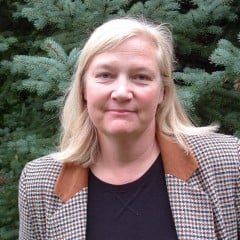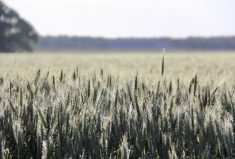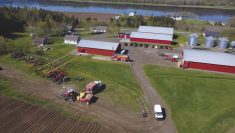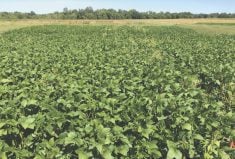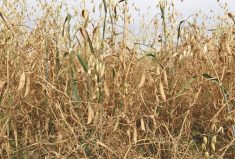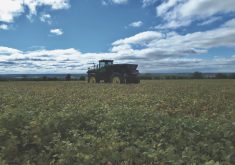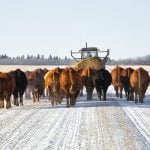This is a story in two halves. First, Joseph Gardiner got passionate about regenerative agriculture. Then, he and his three partners got equally passionate about building a vertically integrated business that would grow and succeed by helping regenerative ag grow and succeed too.
Maybe that sounds too simple, in which case we’re all in for the same education these four got.
“If we didn’t have absolute belief and so much passion behind this idea, it would never have happened,” Gardiner now says. “There are just so many things when starting up a business that have to be done, and if you’re not 100 per cent invested in the idea that you’re going to make change, I think it would be too easy to say, oh I’ll put that off or do it another day or maybe we won’t expand this year.”
Read Also

The big squeeze: How to be fair to siblings during farm succession
Managing sibling business relationships on family farms.
So if there’s one key take-home from the partners’ success at Covers and Co., it’s that success means having enough passion to do what the business needs you to do, when it needs you to do it.
It’s ironic, because six years ago, what Gardiner almost needed to do was give up on farming. It wasn’t that he didn’t love his family’s mixed farm near Clearwater in south-central Manitoba, or that he wasn’t getting support and encouragement from his parents as he farmed alongside them.
“As a conventional farmer, it felt like I was just putting in time; I wasn’t interested in that kind of farming anymore,” Gardiner says. “The conventional ag model just doesn’t fit my personality. I am a curious person, I like change and trying new ideas and being creative. ”
Gardiner had two options: quit the farm, or farm the way he really wanted to.
He still remembered a chance discussion with a professor, Dr. Martin Entz, when Gardiner was taking his ag degree at the University of Manitoba. Entz has an international reputation for research into what has come to be known as “regenerative agriculture.”
“It triggered my curiosity,” Gardiner says, “I had started doing my own research into things like rotation, plant diversity, and looking at the farm from a biological standpoint.”
The information wasn’t easy to come by and Gardiner spent years building a network with farmers who were already adopting these practices. Plus he attended conferences, workshops and presentations, and read anything he could get his hands on.
Although he didn’t realize it at the time, Gardiner was also building a business opportunity.
Change is hard
Gardiner had started in 2011 to dabble with an annual cover crop but made no significant changes to the overall farm until 2017, when he laid his thoughts out to his parents about how to implement the direction he wanted for the farm.
“The more I learned about regenerative farming, the more interested I became,” Gardiner says. “I could see the passion and excitement in the people I met who were doing this, and that was addictive to me.
“It was impossible for me not to take them seriously and look more into their practices, and I knew that I wanted to wake up every morning and be excited about farming again, to implement creative ideas and to try things that had never been tried before on the farm.”
Looking back on it now, Gardiner says he understands how hard it was for his dad, Keith, and mom, Jolene.
“Change is always hard, and I was pretty wet behind the ears,” he says. “There were lots of things I didn’t know, and I didn’t have a good network because it was all pretty new.”
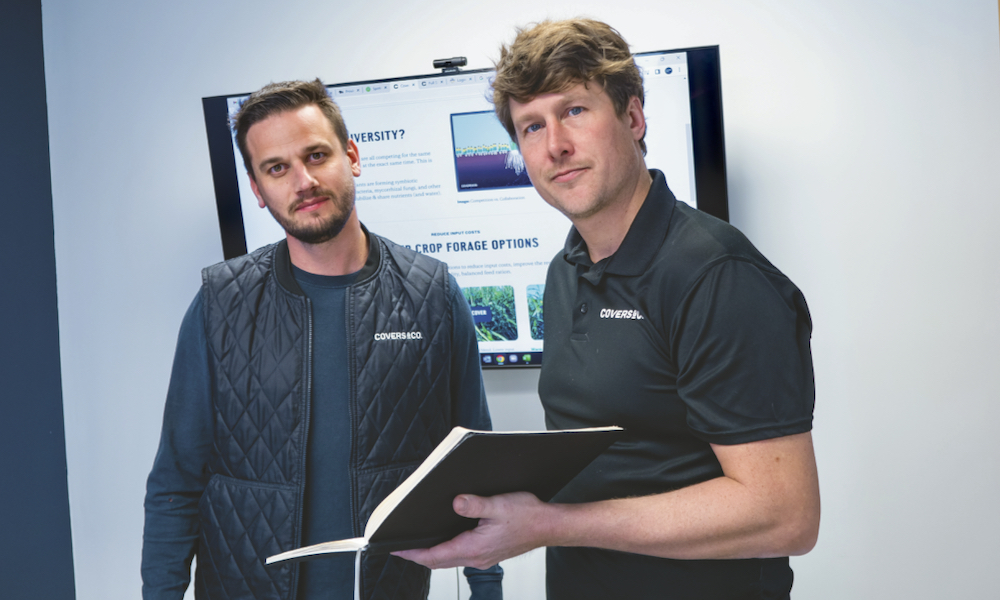
Then there was also the “coffee shop” to deal with.
“All my friends, my family, my community understand conventional farming and had their opinions about what makes you a ‘good farmer,’ and the regenerative movement definitely didn’t fit that mold,” he says.
“If you’re doing something different, they are going to be asking ‘what is Joe up to?’”
Gardiner’s parents had taken some holistic courses themselves, but Gardiner still says they deserve true gratitude from him.
“I am the luckiest farmer in the world because Dad let me make decisions that I was interested in, even decisions he maybe didn’t agree with,” Gardiner says. “My parents always gave me free rein, and sometimes they would ask questions about why are we doing this, and you could tell they didn’t wholeheartedly believe in what was going on for that specific practice, but they trusted me to take that management role.”
Developing a new farm system
The Gardiners scaled back their grain land to around 1,000 arable acres, went to zero till, and started implementing extensive crop rotations, cover crops and intercropping to increase plant biodiversity. They installed a lot of fencing to rotationally graze their 220 cow-calf herd and to integrate them as part of the biological cycle, which has helped improve soil health and water infiltration while significantly reducing their need for fertilizer and other inputs like fungicides.
One of the first things Gardiner had been itching to try was a full-season cover crop, a practice that was still not well known and certainly had not been adopted by many farmers outside of the regenerative movement.
“I wanted to take bigger steps towards soil health, so in 2017 I planted a full-season cover crop. (It was) a diverse, 15-species mix with an entire year dedicated to plant diversity and high-intensity grazing, and then I went back the following year to try and grow a cash crop with no fertilizer inputs,” Gardiner says.
Predictably, a lot of people thought he was crazy, including his good friend Travis Avery, who had been involved in agribusiness for more than a decade and was, at the time, working for a soil test company.
“When I told him what I was going to do he said the same thing that just about everyone else said, but he was a supportive friend,” Gardiner says. “He said, I don’t think that’s going to work but would you let me do the soil analysis, so we can pull a bunch of soil tests before and after.”
The cover idea turned out. In fact, Gardiner still rates that crop as the most interesting and influential he has ever grown. It also led him to get together with Avery in 2020 on a new business venture, Covers and Co., to develop and sell a range of multi-species cover-crop seed mixes and to offer information, education and networking for farmers who are interested in learning more about regenerative farming practices.

What came next
“We spent a year documenting that first full-season cover crop, taking pictures, recording grazing days, doing soil tests. And at the time we didn’t have a business in mind, we just knew this was a good idea and clearly there was a use for this in agriculture,” Gardiner says. “At that time, there were people doing full-season cover crops but it was all anecdotal evidence. There were no numbers or data.”
Avery and Gardiner did as much research as they could. They started spending money on more in-depth soil tests, making research plans and being thoughtful about their grazing and plant species. For two or three years, they gathered as much data as they could, which is really what started the idea for Covers and Co.
“The concept was proven and seemed popular, so we started selling a bit of seed,” Gardiner says.
The next step was to build a website, which was integral to their whole business model of being a one-stop shop for farmers who wanted to learn about cover crops and how to grow them, something that Gardiner’s own experience had taught him was a major hurdle for a farmer wanting to adopt the practice.
“Ten years ago, the biggest roadblock for farmers, and for me personally, to adopting plant diversity and cover crops was accessing information. There just wasn’t a place to get this information,” Gardiner says. “You had to bounce around to find different sources, so when Travis and I started thinking about building the website, we knew we wanted to create something that would have all the information in one place for anyone who is curious about soil health or plant diversity.
“I often tell people, I don’t sell seed, what I do is convince you that plant diversity is the superior production model. If you want to buy seed that’s great, we have some, but my job is convincing people that this is the way to go.”
Building the case
The interesting part about Covers and Co.’s growth is that it’s not all coming from farmers who are involved in, or convinced about regenerative agriculture. Most of the farmers who try cover crops for the first time are focused on the economics, Gardiner says. The farm, after all, is their income source.
That said, Gardiner explains that cover crops are not a panacea; they have to have the right growing conditions just like any other crop to do well, but where there is adequate precipitation at the right times during the growing season, an annual cover crop is an economical crop that farmers can grow for winter forage, and has the potential to set their soil health up for a reduced-input, good-yielding cash crop the following year.
“2021 was really tough on me personally,” Gardiner says. “We expanded quite a bit and a good portion of the cover crops, like everything else, didn’t look good because we had drought. But the testament to plant diversity was that in the fall it started to rain, and while everything else was browned off and dead, where we had the cover crops there was regrowth and lush green.”
Sharing that experience alone has helped them convince more farmers than ever in 2022 to try a cover crop. And so, not surprisingly, have high nitrogen prices.
“Our seed sales went from 60 tonnes in 2020 to more than 2,000 tonnes in 2022, and part of that was due to high fertilizer prices, because you can grow a full-season cover crop for half the nitrogen cost of just growing corn, never mind the seed cost and all the other inputs that go into it, so that really helped convince a lot of farmers,” Gardiner says. “Then we had a fantastic growing season, so we’re assuming there’s going to be even more interest this year (2023). ”
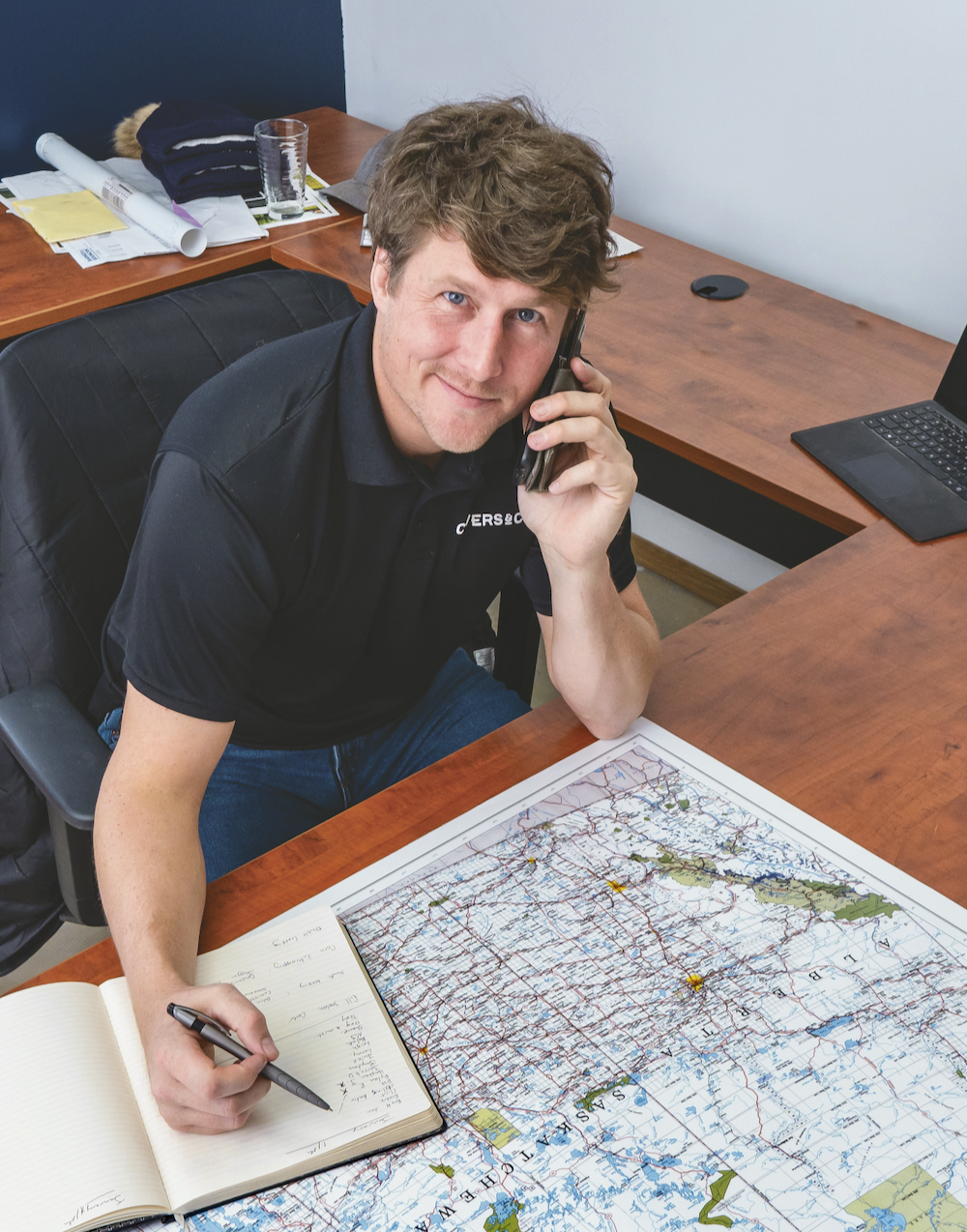
Meanwhile, Gardiner and the team are still working on their own farms as well as with their growing farmer network to compile long-term, hard data.
“There are so many different variables and every farm is different, so we always encourage our farmers to do their own on-farm, reduced-fertilizer strip trials in that year following the cover crop, and to include a no-fertilizer check strip so they can compare the results,” Gardiner says. “These trials are invaluable in building that strong, independent volume of data that can be shared through the entire network of farmers we work with and beyond.”
Triple growth in one year
It appears the message is getting through. Seed sales for Covers and Co. continue to set new records and the company is growing fast enough that it has started to hire more employees. Last spring it also moved into a larger building that used to house the New Holland equipment dealership in nearby Crystal City, providing warehouse and office space for the growing team.
The farmer network is growing too, with more and more farmers offering to do research trials for the company on their farms and to help build and share the database of information among them.
“The only way this was going to work is it had to be a farmer-led grassroots movement,” Gardiner says. “Our role in it is to keep telling these farm stories. There’s not a lot of money in agriculture set aside for research into reducing farm inputs, so we do our own on-farm research and soil tests and all the rest, but it’s telling the stories about these farms and why they grow these crops that resonates so much with farmers.”
Gardiner also reminds himself of a quote from American author and inspirational speaker Simon Sinek: “People don’t buy what you do, they buy why you do it.”
Today, there are four partners involved in Covers and Co., with the other two joining as the business grew and as it evolved a need for what they could bring to it. Gardiner is primarily responsible for managing the on-farm research, which continues to be his passion and inspiration. Avery, with a strong background in the agri-business world and an ag degree from the University of Manitoba, is the company’s general manager.
The third partner is Mike Fallis, who farms and owns a seed cleaning plant. He had been cleaning and dealing in certified seed for a decade, fitting him to the role of operations manager.
Also a partner is Owen Taylor, who has been growing cover crops on his farm based on some of Gardiner’s recommendations and who has the sales experience to manage the sales team and bring new seed dealers on board.
Keeping on track
Today, all the business partners in Covers and Co. share the same vision. But will that always be true? What happens if there are disagreements about the direction the company should take, or if someone just decides they want to move on and do something else?
It’s something the four are all conscious of, even amidst the chaos that accompanies a startup business that is going through a rapid growth stage.
A key management objective is to put mechanisms in place to ensure they are all still on the same wavelength and to address the possibility that this might not always be the case.
An important component is that the four get together for annual vision meetings to look at the company’s direction for the coming year and to align their business and personal goals. “Then we try and come to a consensus as much as possible,” Gardiner says.
“That doesn’t happen 100 per cent of the time,” Gardiner admits. “It comes down to trust because from the visionary standpoint it’s a lot of Travis and I because we have the best understanding of the movement and plant diversity, and the business side of things … we do the best we can with planning and vision meetings and consensus training to make sure we are all on the same page when we make a decision.”
They also use an independent business consultant who helps them with their planning and focus, as well as with how they evolve the business structure and define and monitor everyone’s roles within the business.
Plus, the partners have set up an advisory board which includes their accountant and other business owners and leaders who understand the challenges they might face. The advisory board helps them to look ahead and anticipate some of the future needs of the business, with their biggest role being to go through the financials and check on key ratios, as well as assisting with growth planning and business structure advice, including possible exit strategies for partners.
“The advisory board is helping us to plan ahead and stay on top of some of these things; plan for the worst and hope it never happens,” Gardiner says. “We are trying our best to plan for five, 10 or 15 years out, but really, for the business in the phase we are at now, the most important thing is what’s going to happen in a month, six months, a year or two.”
Having these outside resources to do regular reviews and keep them on track is vitally important, adds Gardiner, because there are times when they are so busy and things are evolving so fast that it’s hard to keep sight of the processes they have already put in place.
In fact, this need to fully embrace what they have already decided is a major challenge for the new company, as the textbooks say it often is for startups as they begin to mature.
Says Gardiner: “There are a lot of things that we have streamlined even this year compared to last year, but it’s easy to forget about them because there is a long list of other things we have to deal with as well.”
Regeneration is part of transition
Like many other family farms across Canada, the Gardiners are in the middle of their transition plan, and regenerative farming has become the cornerstone of that plan and has meant some significant changes to the way they manage the farm and a more critical approach to making decisions.
“Our farm is trying to focus on three things: quality of life, profitability, and rejuvenating the land, and that includes outsourcing our equipment needs and concentrating on things that interest us, like rotational grazing,” Gardiner says. “From a business management standpoint, that has been a shift in how the farm has run for the past 100 years.”
Gardiner is happy that Covers & Co. has already outgrown his own farm’s ability to grow seed for its customers, and has recruited a growing network of other growers and is now adding more and more new dealers who want to distribute their cover crop mixes across Western Canada.
Growing pains
As with any startup business there have been growing pains and all four partners have been surprised by just how many different roles they have found themselves having to fill. Avery, as an example, took six months to learn about website development and graphic design, with no prior experience in that area at all.
“He knew that was a really important part of telling our story and he just taught himself,” Gardiner says. “We get many compliments about our website, but we would never have been a business unless Travis was willing to invest six months of his life into learning how a website works and understanding brand.”
Avery still spends at least 20 hours a week updating and improving the website. In fact, all the partners continue to have to stretch themselves, sometimes beyond their comfort limits, Gardiner says, and the goalposts always seem to be moving, but he’s learned an awful lot from the experience of running another agricultural venture.
“I have likely aged 10 years in the last three,” Gardiner (who is 35) says. “I heard a good quote the other day that sort of sums up where we are at; when you’re a founder, you tackle the most pressing problem you have until you can hire it out, and then you tackle the next biggest problem until you can hire it out. That is how we continue to grow.”
Covers and Co. has grown quickly, and although that’s a good thing, it has meant more new challenges and issues. One of the big ones is always cash flow. “For every business, when it’s growing, cash flow is always an issue,” Gardiner says. “You are always trying to figure out how much inventory you are going to need, how much you can afford, how much are we going to be able to sell and what happens if we don’t.”
Keep sight of the passion
The key to managing it all is having a strong team and being able to keep hold of the passion that was the driving force for the business in the first place, and which it’s easy to lose sight of in the day-to-day.
“Like any startup, and we struggle with this too, the founders got into it for a reason because we were passionate about full-season cover crops, and research, and telling the stories, but it’s really easy to spend all day talking to seed dealers, or doing projections, or setting up a deal, or in a meeting, so it’s really easy to do less of why you got into it in the first place,” Gardiner says.
The future for Covers and Co. is to be leaders in the space of promoting plant diversity and soil health, and for Gardiner and his partners that’s all about continuing to tell the story one farm at a time.
“What we want to get back to, once the dust has settled on the startup phase, is research and telling the story behind that,” he says. “There’s no way we would have been able to do this unless we had a willing customer base and a farm partnership team. It’s the farmer-led research that is leading this.”
The business has evolved and continues to grow through the shared passion and vision of its founders and their partners, but it all comes down to being concerned about the health of the business, just as they are of the soil.
“It comes down to trust and understanding what your role is, making sure you do it well and trusting that our business partners and co-workers are doing the same,” Gardiner says. “And making sure we have the structure in place so that everyone has a clear understanding of how the ship moves.”
“If I was going to farm, we were going to have to make changes to focus on the soil and plant diversity and animal integration,” Gardiner says. “I enjoyed that style of farming and was passionate about it, but I wasn’t doing it.”
“If I can’t farm this way,” he decided, “I guess it’s not in the cards for me to be a farmer.” With the success of Covers and Co., that’s no longer a worry.

